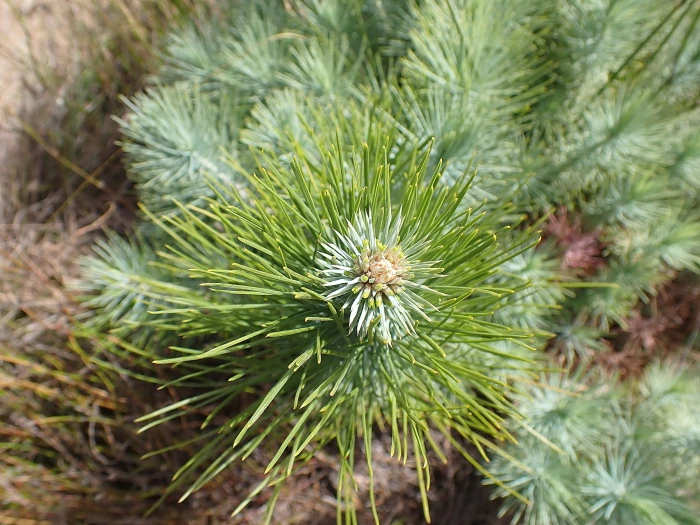Canary Island Pine
(Pinus canariensis)
Canary Island Pine (Pinus canariensis)
/
/

Di Turner
Public Domain
Image By:
Di Turner
Recorded By:
Copyright:
Public Domain
Copyright Notice:
Photo by: Di Turner | License Type: Public Domain | License URL: http://creativecommons.org/publicdomain/zero/1.0/ | Rights Holder: Di Turner | Publisher: iNaturalist | Date Created: 2021-02-19T09:47:29-08:00 |


































































































Estimated Native Range
Climate Requirements for Turin, Italy
| This Plant | Your Site | Plant Suitability for Your Location | ||
|---|---|---|---|---|
| • Precipitation | 1" - 121" | 34" | Your precipitation may be too high for this plant. | Too high |
| • High Temp. | 67°F - 106°F | 84°F | Your summer temperatures are normal for this plant. | Excellent |
| • Low Temp. | 22°F - 65°F | 31°F | Your winter temperatures are normal for this plant | Excellent |
This plant may not grow well at your location - your precipitation is too high.
Summary
Pinus canariensis, commonly known as Canary Island Pine, is an evergreen tree belonging to the conifer family Pinaceae. It is native and endemic to the Canary Islands, specifically Gran Canaria, Tenerife, El Hierro, and La Palma. This species thrives in the subtropical climate of the islands, often found in diverse habitats including volcanic craters, steep slopes, and sometimes in cloud forests where it can form pure stands or mixed forests with other species. The Canary Island Pine can reach heights of 40-75 feet with a width of 9-25 feet, and it features a distinctive, often umbrella-shaped crown with long, slender needles that give it a soft, fine texture from a distance.
The Canary Island Pine is valued for its adaptability to a range of soil types and its exceptional drought tolerance, surviving with less than 200 mm (7.9 in) of annual rainfall. Its ornamental qualities include a striking, reddish-brown bark that becomes deeply fissured with age, and a graceful, airy canopy. It is widely used in warm climates for urban planting, as a windbreak, and in large gardens or parks. While it prefers full sun, it can also tolerate a variety of soil conditions, from slow to fast drainage. Gardeners should be aware that it may require protection from frost in cooler climates. Despite its drought tolerance, it benefits from occasional deep watering in prolonged dry periods.CC BY-SA 4.0
The Canary Island Pine is valued for its adaptability to a range of soil types and its exceptional drought tolerance, surviving with less than 200 mm (7.9 in) of annual rainfall. Its ornamental qualities include a striking, reddish-brown bark that becomes deeply fissured with age, and a graceful, airy canopy. It is widely used in warm climates for urban planting, as a windbreak, and in large gardens or parks. While it prefers full sun, it can also tolerate a variety of soil conditions, from slow to fast drainage. Gardeners should be aware that it may require protection from frost in cooler climates. Despite its drought tolerance, it benefits from occasional deep watering in prolonged dry periods.CC BY-SA 4.0
Plant Description
- Plant Type: Tree
- Height: 40-75 feet
- Width: 9-25 feet
- Growth Rate: Slow
- Flower Color: N/A
- Flowering Season: Non-Flowering
- Leaf Retention: Evergreen
Growth Requirements
- Sun: Full Sun
- Water: Medium
- Drainage: Slow, Medium, Fast
Common Uses
Bird Garden, Deer Resistant, Fragrant, Low Maintenance, Rabbit Resistant, Street Planting
Natural Habitat
Native to diverse habitats including volcanic craters, steep slopes, and cloud forests within the Canary Islands
Other Names
Common Names: Canary Den, Canary Islands Pine, Canary Pine, Kanariese Den, Kanarische Kiefer, Kanaren-Kiefer, Pino Canario, Pin De Ténériffe, Pin Des Canaries, Pino Delle Canarie
Scientific Names: Pinus canariensis
GBIF Accepted Name: Pinus canariensis C.Sm.